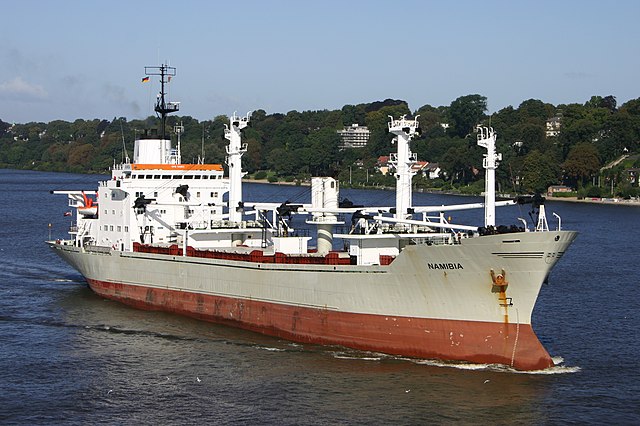Liberty ships were a class of cargo ship built in the United States during World War II under the Emergency Shipbuilding Program. Although British in concept, the design was adopted by the United States for its simple, low-cost construction. Mass-produced on an unprecedented scale, the Liberty ship came to symbolize U.S. wartime industrial output.
SS John W. Brown, one of four surviving Liberty ships, photographed in 2000
Profile plan of a Liberty ship
A colored diagram of compartments on a Liberty ship, from the right side, front to the right Machinery spaces Command and control Liquid stores Dry cargo Engine room Misc Dry stores Habitation
140-ton vertical triple expansion steam engine of the type used to power World War II Liberty ships, assembled for testing before delivery
A cargo ship or freighter is a merchant ship that carries cargo, goods, and materials from one port to another. Thousands of cargo carriers ply the world's seas and oceans each year, handling the bulk of international trade. Cargo ships are usually specially designed for the task, often being equipped with cranes and other mechanisms to load and unload, and come in all sizes. Today, they are almost always built of welded steel, and with some exceptions generally have a life expectancy of 25 to 30 years before being scrapped.
Cargo ship at Puerto Cortés in Honduras.
A container ship unloading at Zanzibar, Tanzania
A US cargo ship off McMurdo Station, Antarctica
General cargo ship Namibia








